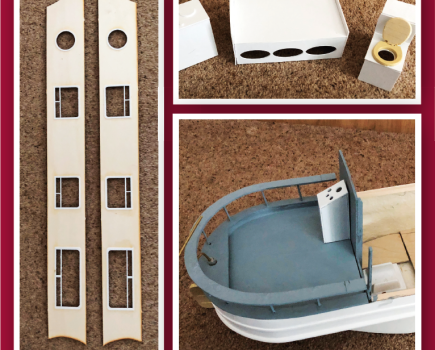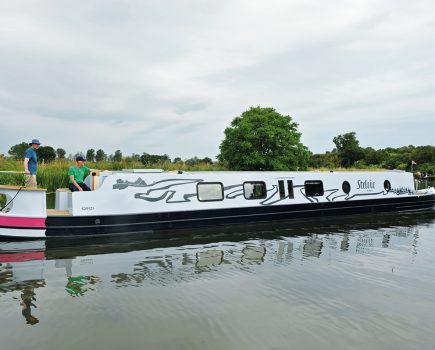With the summer approaching, it’s not just boaters who come out to play when the sun shines – the canals are home to no end of different bird species, so much so that many waterways have been rated as nature sites at local and national levels. Here’s a list of some of the most prevalent ones to keep an eye out for this season; some you’ll see frequently, while others can be a bit shy.

The Heron
This towering grey bird is actually 102cm in length and is becoming an increasingly familiar sight along the waterways with its ‘s’ shaped neck and a long pointed, yellow bill. The heron has some of the largest wings in Britain with a wing span of around 6ft and they can live for up to 25 years. Often seen standing motionless at the water’s edge, it’s patiently waiting to snap up fish swimming unknowingly by.

Random Fact: Male and female herons take it in turns to incubate their eggs over a 30-day period.

The Kingfisher
The kingfisher is easily defined by its dazzling blue and orange feathers. The small, speedy bird flies incredibly fast but hovers when catching fish. To survive, it needs to eat its own body weight in fish per day. Although it predominantly feasts on fish, the kingfisher also eats aquatic insects. You are more likely to find one in the south as they become scarce the further north you go.

Random Fact: the kingfisher is one of very few bird species that is unable to walk

The Coot
The coot is an all black bird, with red eyes, lobbed toes, a white beak and a white facial shield. They feast on roots, grass, leaves, snails and larvae. The coot is a member of the rallidae family and travels and lives in a flock, but has a tendency to be aggressive and territorial during the breeding season. Coots struggle to feed their young (usually a hatching of approx nine birds), as a result they attack the weakest young eventually killing them.

Random Fact: The phrase, ‘As bald as a coot’ stems for the white facial shield above a coot’s bill.

The Reed Warbler
With a preference for the summer season, the reed warbler can be found in Britain from mid-April until October. Warm brown in colour, they have a buff coloured breast and are small. The reed warbler has long claws which enable it to hold onto reeds. You are most likely to find reed warblers living in bush thickets and reed beds.

Random Fact: Young reed warblers have spotted tongues to guide their feeding parents to their mouths.

Canadian Goose
The Canadian goose can be found throughout the year in Britain, most likely swimming along canals or rivers. It is defined by its black head, white chin strap, cream breast and brown back. The Canadian goose has a vegetarian diet and feasts on roots, grass, leaves and seeds.

Random Fact: The oldest Canadian goose on record lived until it was 30 years old!

The Kestrel
With their pointed wings and long tail, kestrels can be commonly found hovering above their prey in Britain. Kestrels live in an abundance of habitats, from farmland to urban areas; and with canals running through many of these places it is quite likely you will catch a glimpse of these beautiful birds of prey. The kestrel feasts on rodents and even smaller birds such as sparrows.

Random Fact: The kestrel’s biggest killer is starvation. 30-40% of kestrels do not survive their first year.
Image(s) provided by:
Getty Images/Hemera







